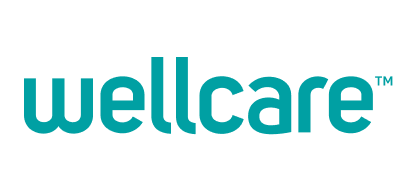The bottom line: Wellcare substantially reduced the availability of its $0-premium Medicare Part D plans, offering them in 17 states in 2026. Still, Wellcare’s prescription drug plans have the lowest average premiums and highest star ratings of any major competitor. Jump to: Full Review

Wellcare Medicare Part D pros and cons
Pros
- Low premiums: Wellcare Value Script plans with $0 premiums are available in 17 states, and Wellcare plans in general charge some of the lowest premiums in the country.
- Quality ratings: While some smaller companies have higher ratings, Wellcare’s weighted average star ratings are notably higher than all of its major national competitors in 2026.
Cons
- Coinsurance requirements: Wellcare plans have coinsurance rather than copays for brand-name drugs, which could get expensive.
- Plan deductibles: Both Wellcare plans have a $615 deductible in 2026, which is up $25 from 2025.
Compare against other providers




» More options in our roundup of the best Medicare Part D plans
Compare against other providers


» More options in our roundup of the best Medicare Part D plans
Our full review
Why trust NerdWallet
45+ Medicare companies and brands analyzed by our team of experts.
30+ years of combined experience covering Medicare and personal finance.
Governed by NerdWallet's strict guidelines for editorial integrity.
NerdWallet’s Medicare content, including articles, reviews and recommendations, is produced by a team of writers and editors who specialize in Medicare. Their work has appeared in The Associated Press, Washington Post, Nasdaq, MSN, MarketWatch, Yahoo! Finance and other national and regional media outlets. They have been cited in publications including Healthline, and appeared on NerdWallet's "Smart Money" podcast.
Wellcare Medicare Part D star ratings
Average Part D star rating, weighted by enrollment: 3.5 stars
Wellcare’s prescription drug plans get an average star rating of 3.5 out of 5 stars from CMS in 2026, weighted by enrollment. For comparison, the weighted average star rating for all stand-alone Part D plans is 3 stars.
The Centers for Medicare & Medicaid Services (CMS) rates Medicare Part D plans on 12 quality measures. (You can find definitions for each of these factors in the CMS Star Ratings Technical Notes.)
These ratings use a 5-point scale where 5 is the best and 1 is the worst. The agency bases its ratings on drug plans’ quality of service and customer experiences, and ratings are updated annually.
» MORE: Medicare star ratings: How they can help you choose a plan
Wellcare Medicare Part D prescription drug plans
Wellcare offers the following stand-alone Medicare Part D prescription drug plans (PDPs) for 2026:
Wellcare Value Script: Wellcare describes this plan as having “a low premium and $0 copays for Tier 1 prescriptions when filled at a preferred cost share pharmacy.”
Wellcare Classic: Wellcare describes this plan as “best suited to those who take only a few medications and seek a low monthly premium."
Medicare beneficiaries with Original Medicare (Part A and/or Part B) can purchase a Medicare Part D plan for prescription drug coverage. Part D plans are sold by private insurance companies. The costs and coverage can vary significantly, so it’s important to compare options.
Over 7.9 million Medicare beneficiaries have Wellcare Part D plans as of September 2025 — an increase of over 1 million members since 2024.
More Nerdy Perspective
Wellcare Medicare Part D cost
The cost per month of a Wellcare prescription drug plan can range from $0 to $45.70 in 2026. The average premium for a Wellcare plan is $8.16 per month. The deductible on all Wellcare plans is $615, but some plans don’t apply the deductible to lower-tier drugs.
Wellcare’s two Medicare Part D plans are geared toward people with different budgets and coverage needs. Each plan comes with different benefits, monthly payments, and copay and coinsurance requirements. Wellcare Value Script has a slightly lower premium, on average, but it may involve higher out-of-pocket costs for non-preferred drugs. Below is a breakdown of the costs for each plan.
Wellcare Medicare Part D premiums and deductibles
Here are the 2026 premiums and deductibles for Wellcare’s stand-alone Medicare prescription drug plans:
Plan | Pricing |
|---|---|
Wellcare Value Script | Monthly premiums:
Annual deductible: $615. |
Wellcare Classic | Monthly premiums:
Annual deductible: $615. |
» If you have concerns about affording Medicare Part D, look into Medicare Extra Help. This federal program can cover up to 100% of Medicare Part D premiums and deductibles for qualifying beneficiaries with low income and limited resources.
You will pay less for your prescription drugs if you go to one of Wellcare’s preferred pharmacies. Wellcare’s preferred network includes CVS and Walgreens as well as a number of other pharmacies and grocery stores. Express Scripts Pharmacy is the preferred mail-order pharmacy.
Out-of-pocket costs
What you pay for deductibles and copays can vary depending on where your medication falls on the plan’s formulary. A formulary is the plan's list of covered drugs, organized by tiers. Having $0-deductible and $0-copay options can help you minimize your out-of-pocket costs.
Each Wellcare plan takes a different approach to these $0 options in 2026:
Wellcare Value Script
$0-deductible options:
Tier 1 and Tier 2 drugs.
$0-copay options:
Tier 1 drugs from preferred pharmacies.
Wellcare Classic
$0-deductible options:
None.
$0-copay options:
Tier 1 drugs from preferred pharmacies.
Cost-sharing requirements for higher tiers can quickly get more expensive, especially for higher tiers that charge coinsurance instead of copays. As a result, it’s important to check where your medications and pharmacies fall on each plan’s formulary.
Copay vs. coinsurance requirements
You’ll want to check whether you’ll pay a copay or coinsurance for your medications. Copays are set dollar amounts, so it’s easy to see what you’ll pay. Coinsurance is a percentage of the price for your medications, so coinsurance requirements can be more unpredictable and more expensive.
All of Wellcare’s 2026 Medicare Part D plans have copays for Tier 2 and coinsurance for Tiers 3 to 5. The Wellcare Value Script plan includes a sixth tier for select care drugs for specific chronic conditions. Tier 6 drugs have a copay.
You can enter your medications and pharmacy information on Wellcare’s website to see which drugs are covered and review your estimated costs with different Wellcare prescription drug plan options.
» MORE: How much does Medicare Part D cost?
Wellcare Medicare Part D service area
Stand-alone Medicare prescription drug plans from Wellcare are available in all 50 states and Washington, D.C..
Wellcare offers both of its Medicare Part D plan options in all of its markets.
About Wellcare
Wellcare was founded in 1985 and became a subsidiary of Centene in 2020. The company's headquarters are in Tampa, Florida. Wellcare offers coverage through Medicare Advantage and Medicare prescription drug plans.
» MORE: Read our review of Wellcare Medicare Advantage
Compare Medicare Part D companies
Get more information below about some of the major Medicare Part D companies. These insurers offer plans in most states, but specifics may vary depending on your location.
Find the right Medicare Part D prescription drug plan
The interactive tool on Medicare.gov can help you find a Medicare Part D plan that covers your prescriptions. It also helps you compare costs among Medicare Part D and Medicare Advantage plans available to you.
Here are some things to keep in mind when comparing plans:
Check the formulary: Make sure the medicines you currently take are covered. Talk to your health care providers about what medications to look for. You might also also want to check for possible alternatives and/or drugs you think you might need in the future.
Look for plan changes: Formularies (lists of covered drugs) change frequently. Your insurer should send you a Notice of Plan Change when the formulary changes. Read that document carefully.
Check the pharmacy network: Most Medicare Part D plans have networks of lower-cost pharmacies. Check to see if the plan's pharmacies are convenient for you. Also, compare prices for using mail order.
You can switch plans during Medicare's open enrollment period, Oct. 15 to Dec. 7. Changes go into effect on the following Jan. 1.
If you have additional questions about Medicare, visit Medicare.gov or call 800-MEDICARE (800-633-4227, TTY 877-486-2048).
Best for low average premiums

- Lowest premiums of any national competitor.
- Star ratings beat other national competitors.
- Coinsurance rather than copays for brand-name drugs could get pricey.
- High-end Wellcare Value Plus plan no longer available.
Article sources
NerdWallet writers are subject matter authorities who use primary, trustworthy sources to inform their work, including peer-reviewed studies, government websites, academic research and interviews with industry experts. All content is fact-checked for accuracy, timeliness and relevance. You can learn more about NerdWallet's high standards for journalism by reading our editorial guidelines.
- 1.Centers for Medicare & Medicaid Services. 2026 Star Ratings Data Tables (ZIP). Accessed Oct 9, 2025.
- 2.Centers for Medicare & Medicaid Services. Medicare 2026 Part C & D Star Ratings Technical Notes. Accessed Oct 9, 2025.
- 3.Wellcare. Wellcare Value Script (PDP). Accessed Oct 9, 2025.
- 4.Wellcare. Wellcare Classic (PDP). Accessed Oct 9, 2025.
- 5.Centers for Medicare & Medicaid Services. PDP Plan Directory. Accessed Oct 9, 2025.
- 6.Centers for Medicare & Medicaid Services. CY2026 Landscape (202509). Accessed Oct 9, 2025.
- 7.Wellcare. 2026 Summary of Benefits. Accessed Oct 9, 2025.
- 8.Centers for Medicare & Medicaid Services. CY2025 Landscape (202412). Accessed Aug 22, 2025.
Medicare Part D plan review methodology
NerdWallet’s Medicare Part D reviews are based on ratings data from the Centers for Medicare & Medicaid Services (CMS), pricing, cost-sharing requirements, formulary design, consumer experience and more.
NerdWallet's editorial team reviewed five Medicare Part D insurance companies based on highest enrollment and greatest online search volume. Together, these five companies cover about 89% of Medicare beneficiaries with stand-alone Medicare Part D plans, according to CMS data. We review at least four major Medicare Part D companies in every state in the United States.
These reviews are a guide, but we encourage you to shop around and compare several plans to find the best coverage and rate for you. NerdWallet does not receive compensation for any reviews. Read our editorial guidelines for additional information.
Compare Medicare Part D Plans
Insurance company | CMS star rating | Out-of-pocket costs | Member experience | Learn more | |
|---|---|---|---|---|---|
BEST FOR LOW AVERAGE PREMIUMS | |||||
 (855) 432-0512 / TTY 711 M-F 9AM-9PM, Sat 10AM-6PM ETSpeak to a licensed insurance agent on askchapter.orgon NerdWallet | 3.50 | 3.50/5 | Varies | 3.5 (Above average) | (855) 432-0512 / TTY 711 M-F 9AM-9PM, Sat 10AM-6PM ETSpeak to a licensed insurance agent on askchapter.orgon NerdWallet |
BEST FOR $0 PREMIUMS | |||||
 (855) 432-0512 / TTY 711 M-F 9AM-9PM, Sat 10AM-6PM ETSpeak to a licensed insurance agent on askchapter.orgon NerdWallet | 3.00 | 3.00/5 | Lower than average | 3 (Average) | (855) 432-0512 / TTY 711 M-F 9AM-9PM, Sat 10AM-6PM ETSpeak to a licensed insurance agent on askchapter.orgon NerdWallet |
 (855) 432-0512 / TTY 711 M-F 9AM-9PM, Sat 10AM-6PM ETSpeak to a licensed insurance agent on http://askchapter.orgon NerdWallet | 3.00 | 3.00/5 | Higher than average | 1.5 (Below average) | (855) 432-0512 / TTY 711 M-F 9AM-9PM, Sat 10AM-6PM ETSpeak to a licensed insurance agent on http://askchapter.orgon NerdWallet |
 (855) 432-0512 / TTY 711 M-F 9AM-9PM, Sat 10AM-6PM ETSpeak to a licensed insurance agent on askchapter.orgon NerdWallet | 2.50 | 2.50/5 | Average | 2.68 (Average) | (855) 432-0512 / TTY 711 M-F 9AM-9PM, Sat 10AM-6PM ETSpeak to a licensed insurance agent on askchapter.orgon NerdWallet |

